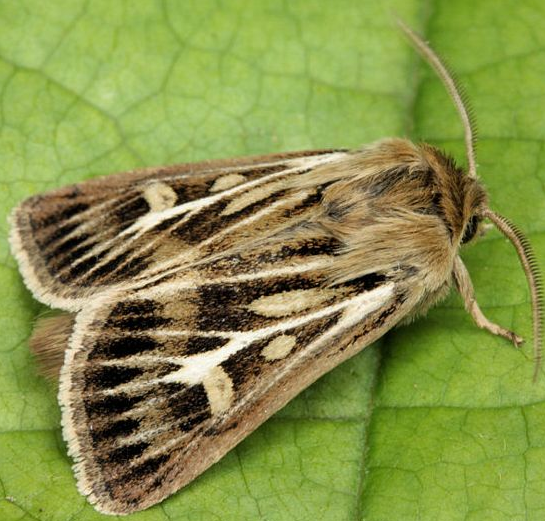On June 16th 1884 immense swarms of caterpillars were reported to have made their appearance in the mountains of east Glamorgan, especially between the Rhondda Valley and Maesteg.
The newspapers of the day were full of detailed reports on the progress of this infestation and the probable outcome for hill farmers.
Western Mail. June 16th 1884.
Rhondda; A plague of caterpillars which have for the last two weeks infested the mountains hereabouts. These creatures appear to subsist solely upon the grass and are now showing signs of spreading further in search of more food; they are already to be found in vast numbers on the mountains of Ystradfodwg, Frwdamos, and Gilfach Goch. The Holy Well of St Mary (Ffynon Fair, Fendigaid) on Penrhys mountain has been contaminated by their falling in, in such great numbers that it is feared they will block the pumps to the reservoir which it feeds and interrupt the supply.
Colonel Picton Turberville, has commissioned experts to report on the nature of this insect invasion. They are studying any cases in the past of this phenomenon, particularly the writings of the Italian agriculturalist, Count Vincenzo Dandolo, who wrote, ‘That the caterpillar, during its 30 day growth cycle, is capable of growing up to 40 times its length and up to 9,500 times its original weight. This feat can be accomplished by its eating 50,000 times its own weight each 24 hours.’
Miss. E.A.Ormerod, of the Royal Agricultural College. (Cirencester), has confirmed from specimens that she has received, that these are identifiable as the caterpillar of the Antler Moth. Late last year the female moths dropped their eggs at night whilst in flight, which landed amongst the roots of the mountain grass. These now have hatched into the caterpillars, who lie dormant during the day, but come out at dusk to feed on the roots and grass itself throughout the night. Her practical solution to this current problem would be to send out lots of small boys at dusk wearing hob-nail boots to stamp on them.
The Western Mail has commissioned its reporter ‘Morien,’ to travel to the affected areas and report back his findings firsthand.
“I walked some miles from the Bwlch this evening, in the direction of Maesteg and into the Ogmore & Garw valleys, and found that these insects are indeed everywhere underfoot. I came across in one place a large hole in the ground, where there were tens of thousands of the creatures writhing around having presumably fallen in.”
Some of the hills in the Ogmore Valley had been fired in an effort to stem the flood of these predators, and the Garw’s slopes seemed to be alive with them. Large flocks of crows were busy feasting on the bounty before them, darting down to fill their beaks, although it is already feared that birds may inadvertently spread the plague further afield by dropping some caterpillars on, as yet, untouched areas of the valleys.

